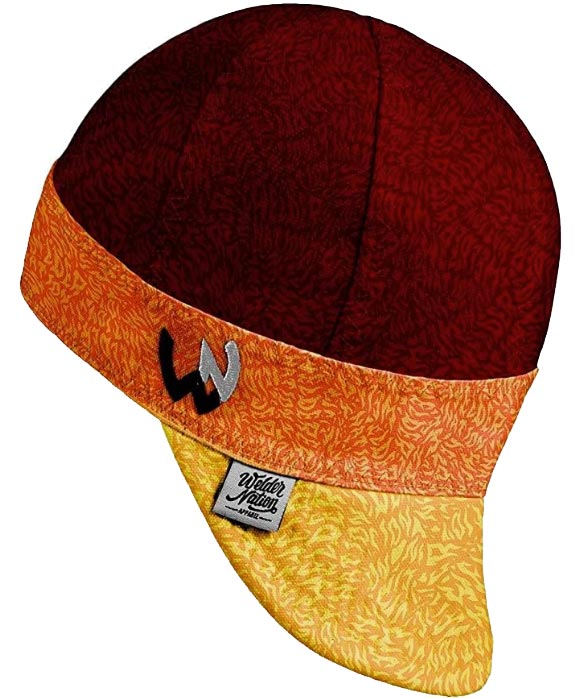Even if you are not a welder, it’s important to wear a welding cap when doing some welding tasks. In fact, you can do so daily. Wearing a welding cap is an essential part of a welder’s uniform that protects the head area and prevents further damage to the eyes or other parts of the body.
This blog will look at how to wear a welding cap.
Welding is a fascinating process that is both beautiful and fascinating. This process usually involves heat and other surrounding materials. Hence, it is necessary to wear protective equipment like a welding cap.
Welding cap, also known as welding helmets, is a type of headgear used primarily for welding. A welding helmet typically has a metal shell with a transparent (or tinted) glass shield and a metal mesh or glass window that protects the eyes.

How to Wear Welding Cap
The first step in learning how to wear a welding cap is to understand what the welding cap is designed to protect. When you are working with welders, you need to know how to wear welding caps properly.
A welding helmet is meant to prevent you from getting injured by hot molten metal, sparks, ultraviolet radiation, or flying metal. They also provide a comfortable way to protect your eyes while welding work.
You will need to purchase a welding cap and the right size for your head. When you buy a welding cap, look for one with a face piece made of either fiberglass, carbon fiber, or ceramic.
Wear the hat with the bill on the side and the crown height
When you are welding in a one-sided posture, this position is useful. The bill faces the side to protect the chin and ear facing the machine directly. How useful this can be is evident if you’ve ever heard the sound of your own ear canal crackling when exposed to hot welding slag.
You may also like: How Hot Is a Welding Arc?
Pull the cap’s crown down to cover more of the region around the neck and collar when wearing it with the bill to the back.
This position is appropriate if you are welding something that will hang overhead, such as window grills or door hinges. Your head, neck, and even your shirt could be exposed to the sparks from your work at an overhead construction site. A rear-facing bill can be used to conceal long hair because it protects the neck and collar.
Why is a welding cap required?
If you are using a welding helmet, you must wear one. While welding, you may need to wear a welding cap to protect the region above your eyes and ears. The welding cap can be a very important part of your safety equipment.
- You should be using a welding cap if you are welding in a one-sided posture. When you are working with a welding torch, you must protect your face. The welding cap allows you to do this.
- Welding is a craft that requires working under intense heat, which can be uncomfortable and make you sweat. Your vision may become blurry and itchy due to the sweat running down your face and into your eyes, neck, and back.
- The welding cap is made of an absorbent substance. The cloth absorbs the sweat, leaving you feeling cool and dry. Additionally, the cap is made of a permeable material that allows air to circulate and cool your ears and scalp.
- The cap’s fabric also serves as a cushion to shield the body from the discomfort that the metal used to build the helmet causes. The cap secures the helmet and prevents it from falling off while worn underneath. So it makes sense to wear a headband with a helmet.
Final Thoughts
We hope you enjoyed our blog about how to wear a welding cap. Though welding caps might seem like a tedious staple of the trade, we are here to tell you that they can be really useful if you put them to good use.
We wanted to write about it because we have an easy tip for anyone who wears a welding cap. If you wear a welding cap, you will want to make sure to use some product to help prevent hair from getting stuck in your cap. Thank you for reading. We would love to hear from you!